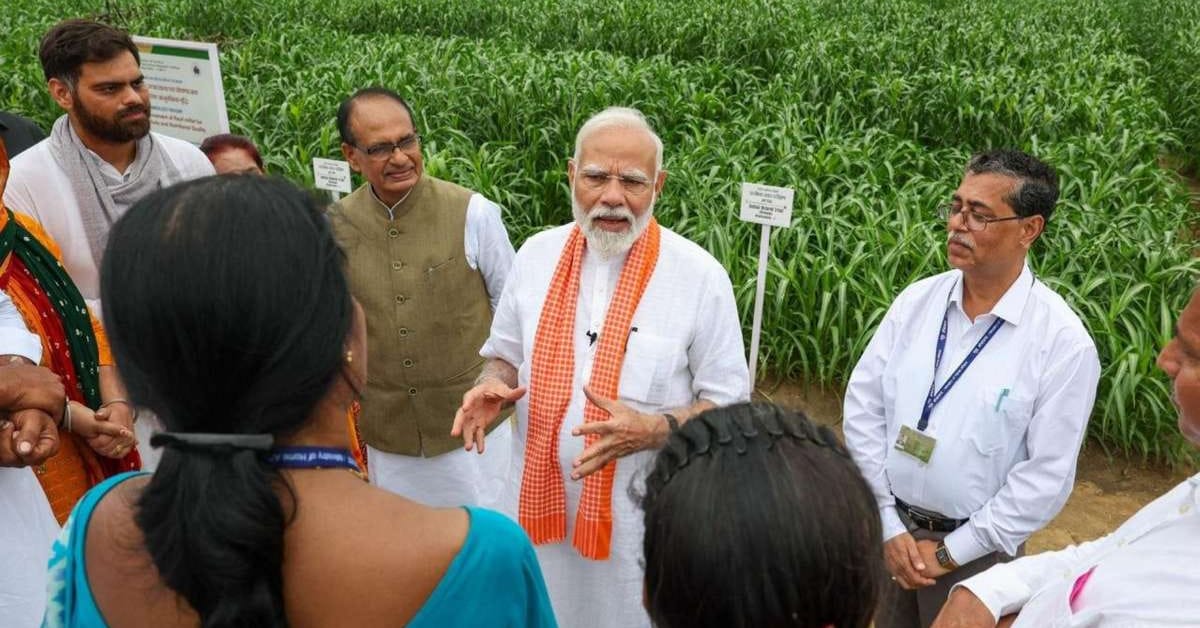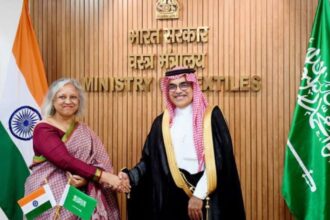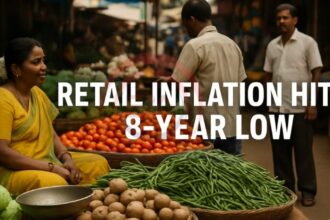On the day of Bharat Ratna Jayaprakash Narayan’s birth anniversary, Prime Minister Narendra Modi launched two groundbreaking agricultural schemes worth over Rs 35,000 crore. This isn’t just another government announcement—it’s a bold vision to transform millions of farmers’ lives and position India as a global agricultural powerhouse.
For decades after independence, India’s agricultural sector helped the nation achieve food self-sufficiency. But as PM Modi emphasized, it’s time to think bigger. “We must not only be self-reliant but also produce for the global market,” he urged farmers, highlighting the untapped potential in agricultural exports.
The philosophy is simple yet powerful: without agricultural development, India cannot achieve true economic growth. As the nation races toward its $5 trillion economy target—possibly by 2027—agricultural exports must play a starring role.
Two game-changing schemes
PM Dhan Dhaanya Krishi Yojana (PMDDKY)
With an outlay of Rs 24,000 crore, this scheme targets 100 struggling agricultural districts identified by three factors: low productivity, moderate crop intensity, and below-average credit access. By focusing resources where they’re needed most, the government aims to uplift entire regions.
Mission for Aatmanirbharta in Pulses
This Rs 11,440 crore “campaign to empower future generations” sets ambitious targets for 2030-31: expanding pulse cultivation to 310 lakh hectares, boosting production to 350 lakh tonnes, and increasing yields to 1,130 kg per hectare.
Beyond the schemes: A complete transformation
PM Modi didn’t stop there. He inaugurated over 1,000 projects worth Rs 3,650 crore under the Agriculture Infrastructure Fund, along with projects in animal husbandry, fisheries, and food processing—covering every corner of the agricultural ecosystem.
The government has also slashed GST rates to reduce farmers’ expenses. Consider this: tractors that once carried a Rs 70,000 tax burden are now Rs 40,000 cheaper, putting more money directly into farmers’ pockets.
For the past 15 years, agricultural modernization crawled at a slow pace, largely limited to regions like Punjab with larger farm sizes. Now, the focus shifts to untapped regions, particularly the Northeast. Since 2018, Arunachal Pradesh has been leading the charge with land identification, documentation, and geo-tagging of farms—bringing precision agriculture to new frontiers.
This isn’t Modi’s first agricultural success story. As Gujarat’s Chief Minister, he pioneered the “Gujarat Model,” which wasn’t just about industry—it revolutionized agriculture by bringing irrigation to areas that had never seen it before.
The contrast is striking. The previous Congress government provided Rs 5 lakh crore in fertilizer subsidies over ten years. The current NDA government? Rs 13 lakh crore in the same period. Additionally, Rs 3.75 lakh crore has been deposited directly into farmers’ accounts through PM Kisan Samman Nidhi.
Building tomorrow’s India
As Animal Husbandry Minister Rajiv Ranjan Singh noted, the livestock sector grew 63% in the last decade, making India number one in milk production. With nine states set to become foot-and-mouth disease-free soon, the momentum is undeniable.
PM Modi’s message is clear: farmers aren’t just feeding India—they’re building a developed nation and conquering global markets. This is their moment to shine.









